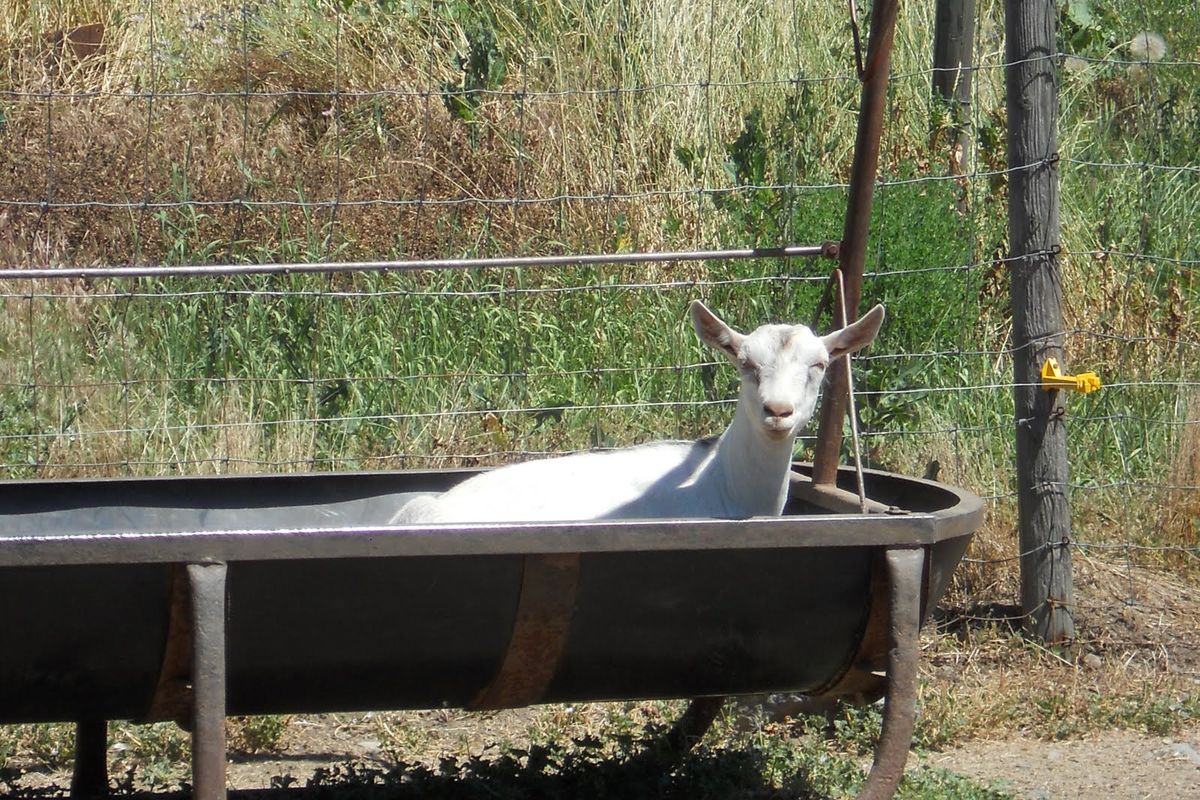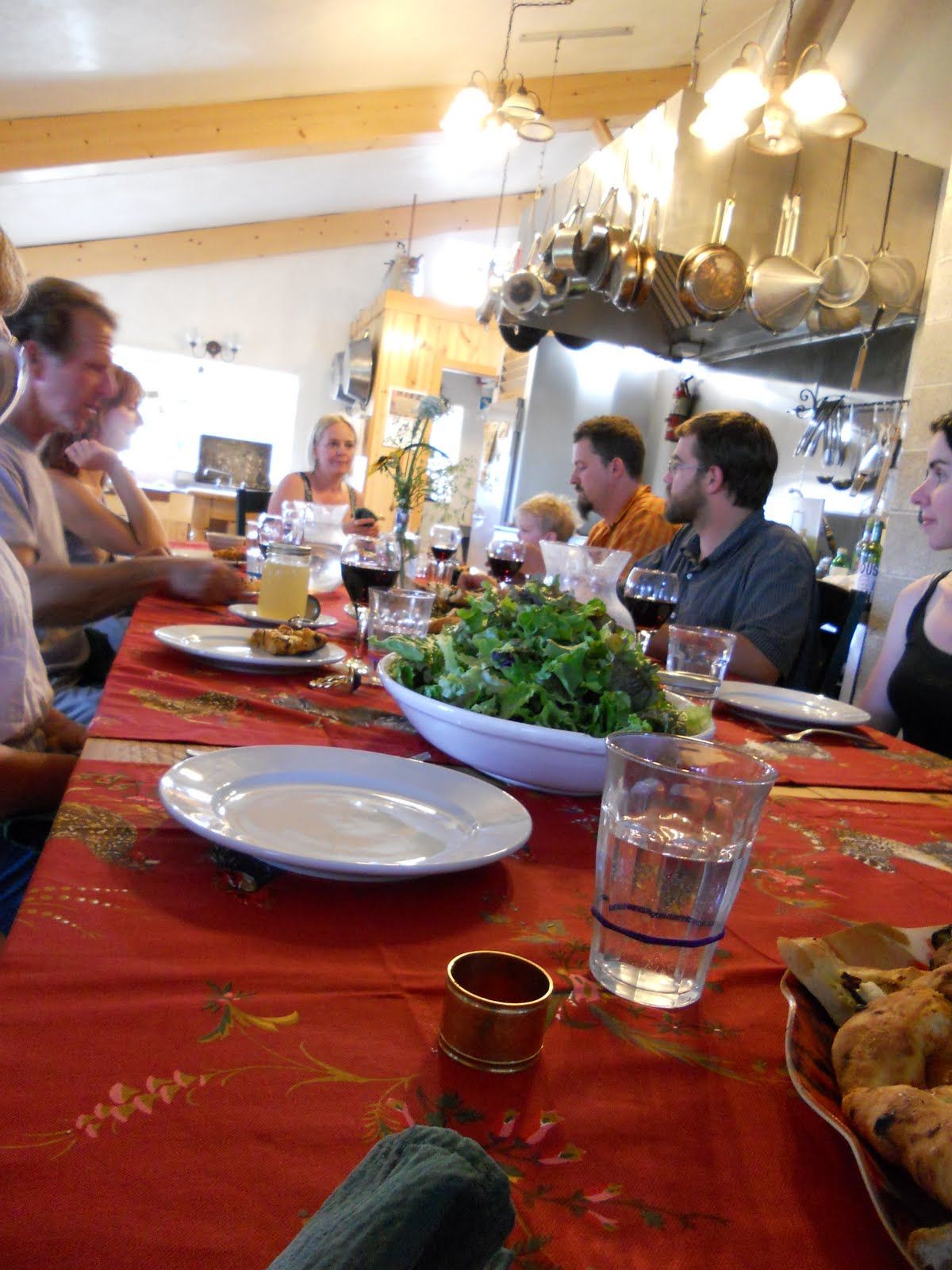Quillisascut helps create connections
Teacher workshop help students symbolically and literally plant seeds
A farm near Kettle Falls, Wash., has become a central spot to educate people about the value of sustainable living. (Courtesy Liz Shale)
In 1950, the US had 6 million farmers, but thanks to industrialization, exploitation, off-shoring and mechanization, we are down to 300,000 who generate 90 percent of the agriculture output. Their specialty is meat (pork, poultry) and commodities, storable crops that are abundant and cheap.
Huge corporations are in the business of producing crops that we in the food movement link to diets high in salt, fat, sugars, and nutritionally-defeated processed food. The U.S. also subsidizes these crops – rice, cotton, sorghum, sugar, wheat, corn, barley, dairy, eggs, meat. Remember not too long ago when tobacco was an agricultural product that garnered huge sums of U.S. greenbacks in the form of ag subsidies, also known now as corporate welfare?
Five of these – wheat, corn, soybeans, rice, and cotton – get 90 percent of the subsidies. Wheat and rice are grown for human food. Not much of corn and soybeans is actually consumed since they feed livestock. More than a third of corn goes into bio-fuel and more than half goes toward high-fructose distilled and cooked corn syrup.
So how do we embody a land connection to students, who are the lifeblood of the current blood-letting occurring throughout the states and national spheres? We want educated, smart folk who are critical thinkers, yet we are cutting classes and firing teachers and eliminating programs.
This short context leads us to the issue of educators and curriculum experts visiting a working sustainable farm and learning about the environment that is at the center of and connected to farming.
There are all sorts of actors in this shift toward food fluency, community-centered farming and holistic sustainability practices involving eaters and growers, from Michael Pollan to Seattle restaurateur Tom Douglas to urban gardener Novella Carpenter to First Lady Michelle Obama.
We can go further back and look at language from 75 years ago when the first Farm Bill was pushed through by the Theodore Roosevelt:
• Conservation of the soil itself through wise and proper land use
• Reestablishment and maintenance of farm income at fair levels
• Protection of consumers by assuring adequate supplies of food and fiber
Or tie into Wendell Barry’s work as a farmer, activist, spiritual guide and writer:
Everyday do something that won’t compute….
Love the world. Work for nothing.
Take all that you have and be poor.
Love someone who does not deserve it.
(From: “Manifesto: The Mad Farmer Liberation Front” in “Farming: A Hand Book,” 1970)
Or listen to these words from a Japanese land activist – “People interfere with nature, and, try as they may, they cannot heal the resulting wounds.” (Masanobu Fukuoka 1978)
According to poet and land activist Veronica Gaylie, professor at University of British Columbia-Okanogan, the One Straw Revolution started by farmer-philosopher Fukuoka embodies a simplicity that “describes his journey of discovering do-nothing farming, a technique he introduced to Japan around the middle of the last century, where rice is grown without pesticide or even removal of weeds. The technique both conserves water and helps retain the integrity of the soil.”
Here’s how Gaylie and more than a dozen others worked out these land-food-community relationships on paper, in the field, around the table and in front of stoves and ovens — they went to Rick and Lora Lea Misterly’s Quillisascut Farm, in Rice, near Kettle Falls, last year and let their academic backgrounds blend with the local knowledge the Misterlies have been sharing for more than two decades on a 35-acre farm that has been dubbed by some as nirvana for living lightly and with nature; by chefs as this refuge of sustainability; and by growers and others as a place of community building and sharing.
What can some three dozen or more goats tell a Ph.D. who faces hungry students at Eastern Washington or UBC? How can learning the process of sieving, churning and molding mozzarella or ricotta from goat milk encapsulate a global learning theater? For teachers from University of Idaho, WSU, EWU, UBC and Bellingham School District, the immersion was a complete transformation for folk who have been looking at nutrition and even agronomy for a long time.
The idea for many attending this summer week-long school is to not look at the plants, seeds and soil as the garden, but to insert community into each step, making what will then be a community garden. Francene Watson, one of the Quillisascut brethren, and WSU doctoral student and teacher, is developing place-based education tied to gardens.
She’s been working with second graders, making sure that each school has a greenhouse, composting program, and garden.
WSU College of Education Instructor Justin Hougham helped establish for the 2010-2011 school year a program entitled Palouse Pollinators: School garden Series for Teachers and Learners.
“This project is based on the simply query: What if everyone could learn the wonders of sowing seeds, nurturing plants, and learning how to cook produce fresh from the garden?” Hougham stated.
The Quillisascut attendees learned how to talk to bees, lift food from soil, draw shadow from the apricot trees needing strong harvest hands. They learned the thermal dance of a bread and pizza oven that always reminds me of my days growing up on Portugal’s Azores islands. They were there to inculcate change in their instruction.
I’ve been to the farm years ago, before a book was written about it, before a video was made. The capable hands of Kettle Falls’ Karen Jurgenson, who works the kitchen and community gatherings at Quillisascut and the Seattle Culinary Academy, draws strength and gastronomical harmony from students.
She can take native service berries and demand from them flavors only garnered from knowing the land from whence they grew. Nurturing knowledge is as time-consuming as nurturing chicks into laying hens.
Veronica Gaylie wrote in her journal what I’ve heard many professional chefs and workshop participants say after experiencing ‘the Quillisascut way:’
“Learning to milk goats, make cheese, feed chickens, repair a chicken tractor, and weed vegetable beds in the hot sun, I learned again. I learned to trust community. I recalled that I have never really been comfortable with fitting seamlessly into mainstream ways of working, thinking, or being. I am not comfortable with politics or air thickened with self-importance. I am so not into ignoring what is real.
I am not comfortable living in the fear of being left behind in a world that is often looking backwards. I now know that feeling comfortable and at ease within the corridors of academia is probably not a place I will ever be.
And I am at peace with that.”
This is the first of a series of stories about the impact of Quillisascut Farm on various communities including education and sustainability.

